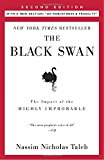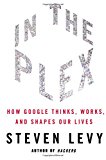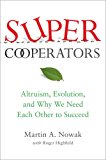Parsing up Pinheads, Dropping Leaflets
On Twitter, of the 800 or so contacts I follow, plus the dozen keywords I search through, there seem to be two types of messages (tweets) that get the most attention (re-tweeted, via-ed, HT-ed, etc.); Parsing up Pinheads or Dropping Leaflets. These messages represent the ends of the Tweet-spectrum. Like most things in life, the extremes get the most attention, but on Twitter, where this data is open and search-able, we can put our finger on the pulse, draw circles on our charts, and point the way to make sense from the tangles.
Parsing up Pinheads
As marketers seek to reach highly targeted audiences, these markets will shrink down into pinhead-sized pie charts. There is very little real estate to share on the head of a pin. The messages that resonate with these markets (people) will become more and more specific. This means greater competition for attention, driving the messaging to the highly focused extremes. If you’re marketing niche products/services on social networks such as Twitter, your messaging should reach for the edges.
Dropping Leaflets
The opposite of Parsing Pinheads, Leaflet-droppers seek all of your attention about nearly everything, sometimes to the point where you have no idea what they really do. Doesn’t matter (maybe) as they have your attention. Users flock to their light like ladybugs to lamp-bulbs, and click the links until their browsers have 20 open tabs. Their messaging is grand in scale, they want to filter-in the most eyeballs; they are hardly specific in their content but are deliberate in their approach. If they drop enough leaflets on you, dozens will fall into your hands, and you’ll always have them (the person dropping the leaflets) on your mind. This approach takes more time, but spreads a wider net. If you have the resources, drop leaflets.
What to do?
I say do both, but don’t get stuck in between. The immediacy of Twitter is intoxicating, and urges you to tweet every possible thought, which could cause you to drop messages into the echo chamber. Don’t do it (well, don’t make it your focus, I do it sometimes too).
Example: You really want to Tweet about how you’ve found a great crafting site. Rather than just say, “I found this awesome site,” dig a little deeper. Parse up the Pinhead, go towards the personal niche, “This paper mache frog has fangs, totally freaks me out!” Or go the other direction and be general, but useful, Drop a Leaflet, “Did you know that paper-mache translates to ‘chewed up paper’ and was patented in 1772?”
The trick is to be your best editor (really consider your Tweeting before leaping), know your audience, and be active on the edges.






